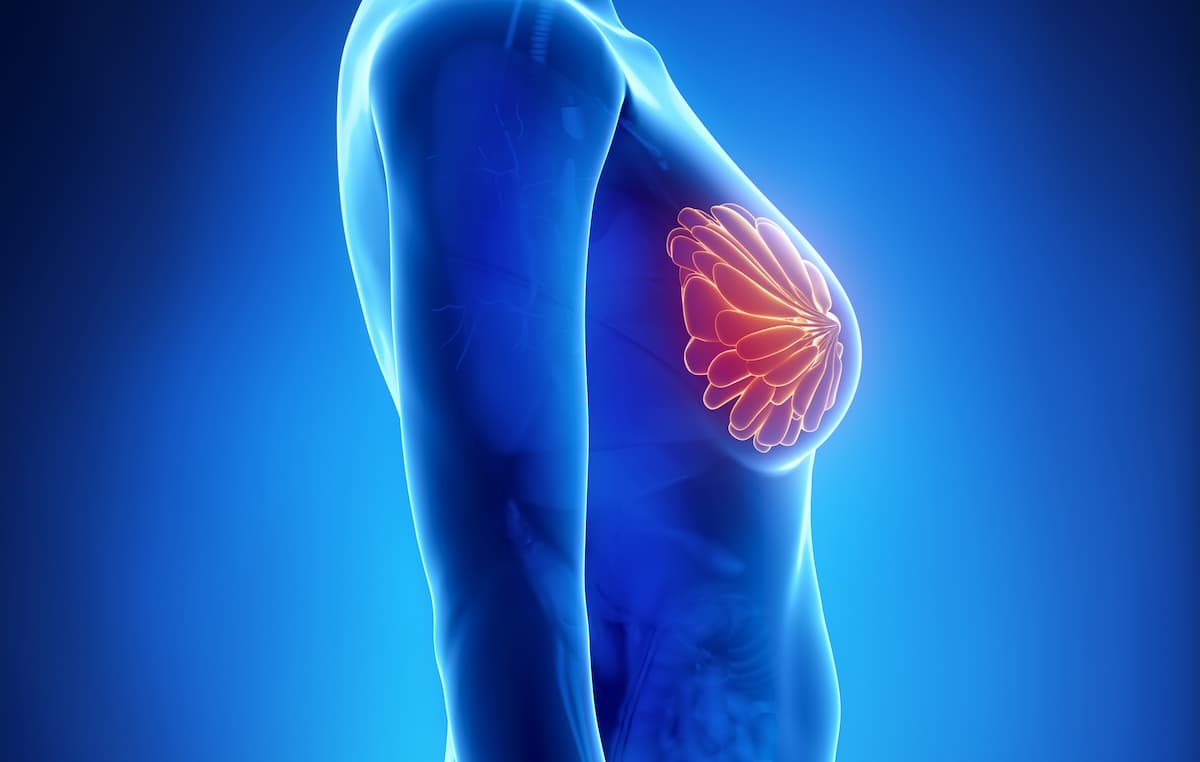ASCO Updates Guidelines for CDK4/6 Inhibitor Use in Breast Cancer
The new recommendation update modifies a 2020 ASCO guideline on the selection of optimal adjuvant chemotherapy and targeted therapy for breast cancer.
"The Panel characterized the strength of the ribociclib recommendation as conditional, pending future efficacy data and regulatory updates," according to the guideline authors.

The American Society for Clinical Oncology (ASCO) published a guideline rapid recommendation update on the use of adjuvant chemotherapy and targeted therapy for early breast cancer following new data from the phase 3 monarchE trial (NCT03155997) and phase 3 NATALEE trial (NCT03701334) on the use of CDK4/6 inhibitors abemaciclib (Verzenio) and ribociclib (Kisqali) in patients with stage II/III disease.1
The ASCO panel promotes the use of abemaciclib in those who would have met the eligibility criteria for the monarchE trial. Additionally, ribociclib is recommended for those who would have met criteria for enrolling on the NATALEE trial, including patients with a high risk of recurrence. The strength of recommendation was higher for abemaciclib than ribociclib, with the panel citing potential risks for patients with node-negative disease when receiving ribociclib.
The new rapid recommendation update modifies a 2020 ASCO guideline on the selection of optimal adjuvant chemotherapy and targeted therapy for breast cancer, addressing adjuvant use of the CDK4/6 inhibitors in stage II/III breast cancer.2 The previous update recommended adjuvant ado-trastuzumab emtansine (T-DM1; Kadcyla) to treat patients with HER2-positive breast cancer and pathologic invasive residual disease at surgery after preoperative chemotherapy and HER2-targeted therapy.
“The Panel characterized the strength of the ribociclib recommendation as conditional, pending future efficacy data and regulatory updates,” the guideline authors wrote.1 “Although a formal cost-effectiveness analysis was out of scope for this update, it could be informative for some decision makers considering the costs of both medications.”
Phase 3 monarchE Trial
Investigators of the global, open-label, phase 3 trial randomly assigned 5637 patients 1:1 to receive adjuvant endocrine therapy for 5 or more years with or without abemaciclib for 2 years.3 Cohort 1 enrolled patients with 4 or more positive axillary lymph nodes (ALNs), or 1 to 3 positive ALNs and either grade 3 disease or a tumor greater than or equal to 5 cm. Cohort 2 enrolled patients with 1 to 3 positive ALNs and a centrally determined Ki-67 index at greater than or equal to 20%.
The primary endpoint was invasive disease-free survival (IDFS) in the intent-to-treat population. Secondary end points were IDFS in patients with high Ki-67, overall survival (OS), and safety.
Findings showed that abemaciclib plus endocrine therapy produced a 29% reduction in the risk of having an IDFS event (HR, 0.71; 95% CI, 0.58-0.87; nominal P = .0009) at 19-month follow-up time. At 27 months, 90% of patients were off treatment, and IDFS (HR, 0.69, 95% CI, 0.57-0.83; P <.0001) and distant relapse-free survival (DRFS; HR, 0.69; 95% CI, 0.57-0.83; P <.0001) benefit was maintained. Additionally, the absolute improvements at 3 years were 5.4% in IDFS rate and 4.2% in DRFS rate with abemaciclib plus endocrine therapy.
Phase 3 NATALEE Trial
Investigators of this phase 3 trial randomly assigned pre- or postmenopausal patients with hormone receptor–positive, HER2-negative metastatic breast cancer to receive endocrine therapy with letrozole at 2.5 mg per day or anastrozole at 1 mg per day for 5 or more years with (n = 2549) or without (n = 2552) ribociclib at 400 mg per day in a 3-weeks-on, 1-week-off schedule for 3 years.4 Menopausal status, disease stage, prior neoadjuvant chemotherapy, and geographic region were stratification factors.
The primary end point was IDFS. Secondary end points were OS, recurrence-free survival (RFS), and distant disease-free survival (DDFS).
Median follow-up was 34 months at data cutoff, with 2- and 3- year ribociclib treatment completed by 56.8% and 20.2% of patients, respectively. Of the original population, 74.7% remained on study treatment, including 1984 patients in the ribociclib arm and 1826 in the control arm. IDFS was evaluated after 426 events (ribociclib, n = 189; control, n = 237), with the ribociclib arm having longer IDFS than the control arm (HR, 0.748; 95% CI, 0.618-0.906; P = .0014). The 3-year IDFS rates were 90.4% vs 87.1% in each arm.
References
- Freedman RA, Caswell-Jin JL, Hassett M, et al. Optimal adjuvant chemotherapy and targeted therapy for early breast cancer—cyclin-dependent kinase 4 and 6 inhibitors: ASCO guideline rapid recommendation update. J Clin Oncol. 2024;42(18). doi:10.1200/JCO.24.00886
- Denduluri N, Somerfield MR, Chavez-MacGregor M, et al. Selection of optimal adjuvant chemotherapy and targeted therapy for early breast cancer: ASCO guideline update. J Clin Oncol. 2021;39(6):685-693. doi:10.1200/JCO.20.02510
- Harbeck N, Rastogi P, Martin M, et al. Adjuvant abemaciclib combined with endocrine therapy for high-risk early breast cancer: updated efficacy and Ki-67 analysis from the monarchE study. Ann Oncol. 2021;32(12):1571-1581. doi:10.1016/j.annonc.2021.09.015.
- Slamon DJ, Stroyakowsky D, Yardley DA, et al. Ribociclib and endocrine therapy as adjuvant treatment in patients with HR+/HER2- early breast cancer: primary results from the phase III NATALEE trial. J Clin Oncol. 2023;41(suppl 17). doi: 10.1200/JCO.2023.41.17_suppl.LBA500